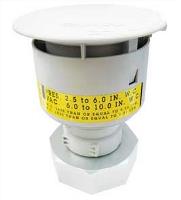Fuel stations continuously fall victim to product loss from an invisible thief. The perpetrator cannot be apprehended or even stopped, but its methods are known. The thief is not a person or a company, but a combination of two activities: working loss and breathing loss. And while these losses of product cannot be stopped, the vapors associated with these activities can be managed. Effective management is accomplished by employing ventilation systems that have been designed to redirect flammable vapors that occur during these activities. For each type of product loss, let's examine why proper ventilation is so critical for fueling operations.
 Working loss for gasoline storage tanks occurs during the actual filling and emptying of the storage tanks. During the filling process, the container's available vapor space lessens because of rising liquid levels. By reducing the vapor space, vapors compress and raise the overall pressure inside the tank. If the pressure were to continue to increase without an opportunity to escape, the pressure could continue to build until tank failure occurs. To prevent tank failure, a vent pipe with a pressure vacuum vent is used.
Working loss for gasoline storage tanks occurs during the actual filling and emptying of the storage tanks. During the filling process, the container's available vapor space lessens because of rising liquid levels. By reducing the vapor space, vapors compress and raise the overall pressure inside the tank. If the pressure were to continue to increase without an opportunity to escape, the pressure could continue to build until tank failure occurs. To prevent tank failure, a vent pipe with a pressure vacuum vent is used.
The vent pipe extends from an underground or above ground storage tank. A pressure vacuum vent (PVV) then covers the vent pipe. The PVV serves two purposes: the first is to reduce tank pressures by opening a poppet within the valve at a predetermined pressure or vacuum setting, thereby allowing the tank to vent, and the second is protecting the vent pipe from debris, water and insects.
Working loss also occurs during the transfer of fuel from the storage tank to the dispensing nozzle. As fuel pushes through the hoses connecting the tank and nozzle, air becomes saturated with gasoline vapors and expands. The expansion of the saturated air exceeds the tank's holding capacity and is released through the vent pipe. Without this system, pressure buildup could initiate tank failure.
Even tanks that are not experiencing filling or emptying can still suffer from product loss. The condition known as breathing loss occurs when the tanks emit gasoline vapors because of differences in external and internal temperature and pressure. If the internal pressure reaches a prescribed level, the valve will open and release vapors – reducing the overall pressure. Once tank pressure achieves an acceptable level, the valve closes. When functioning properly, the valve will reopen as needed.
As with any enclosed containment system, measures should be taken to guarantee adequate ventilation systems are in place. This is because contained systems can succumb to pressures that result in implosions or explosions. And, when working with commodities that generate combustible vapors, containment-system failures can be magnified by a high-energy event. That is why, in order to protect people, property and the environment, adequate investments should be made for ventilation systems at fueling operations.
Click here for additional information regarding ventilation products.
To learn more about OPW, contact your local OPW Sales Representative or OPW Distributor.